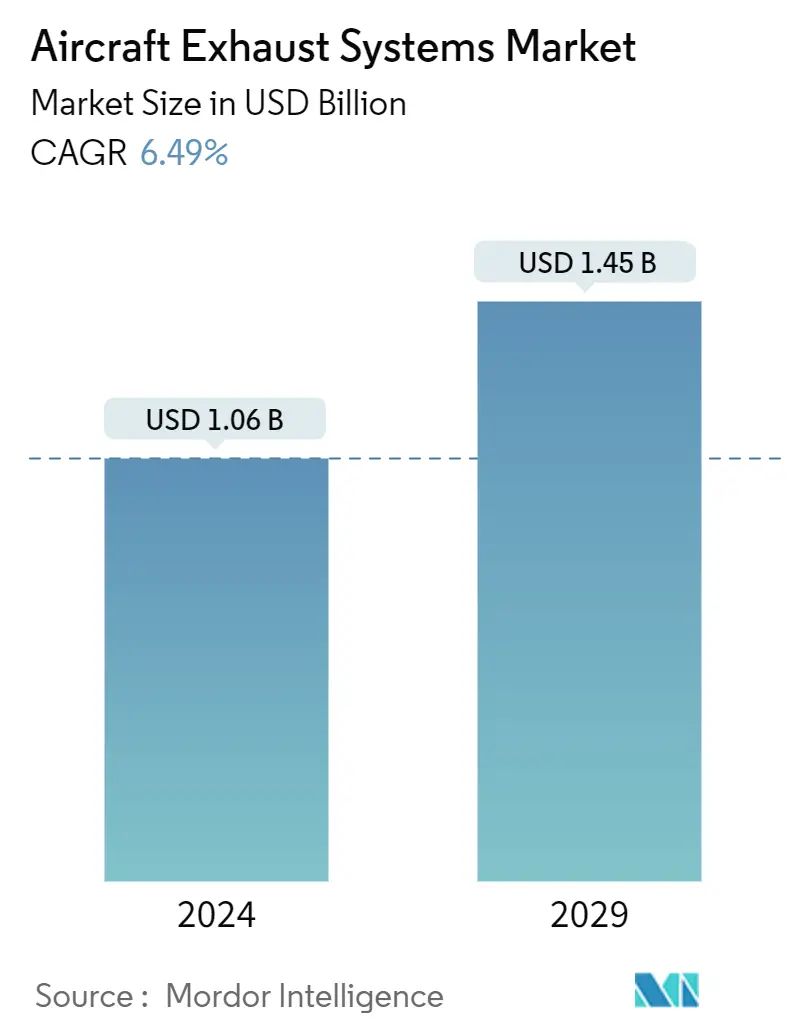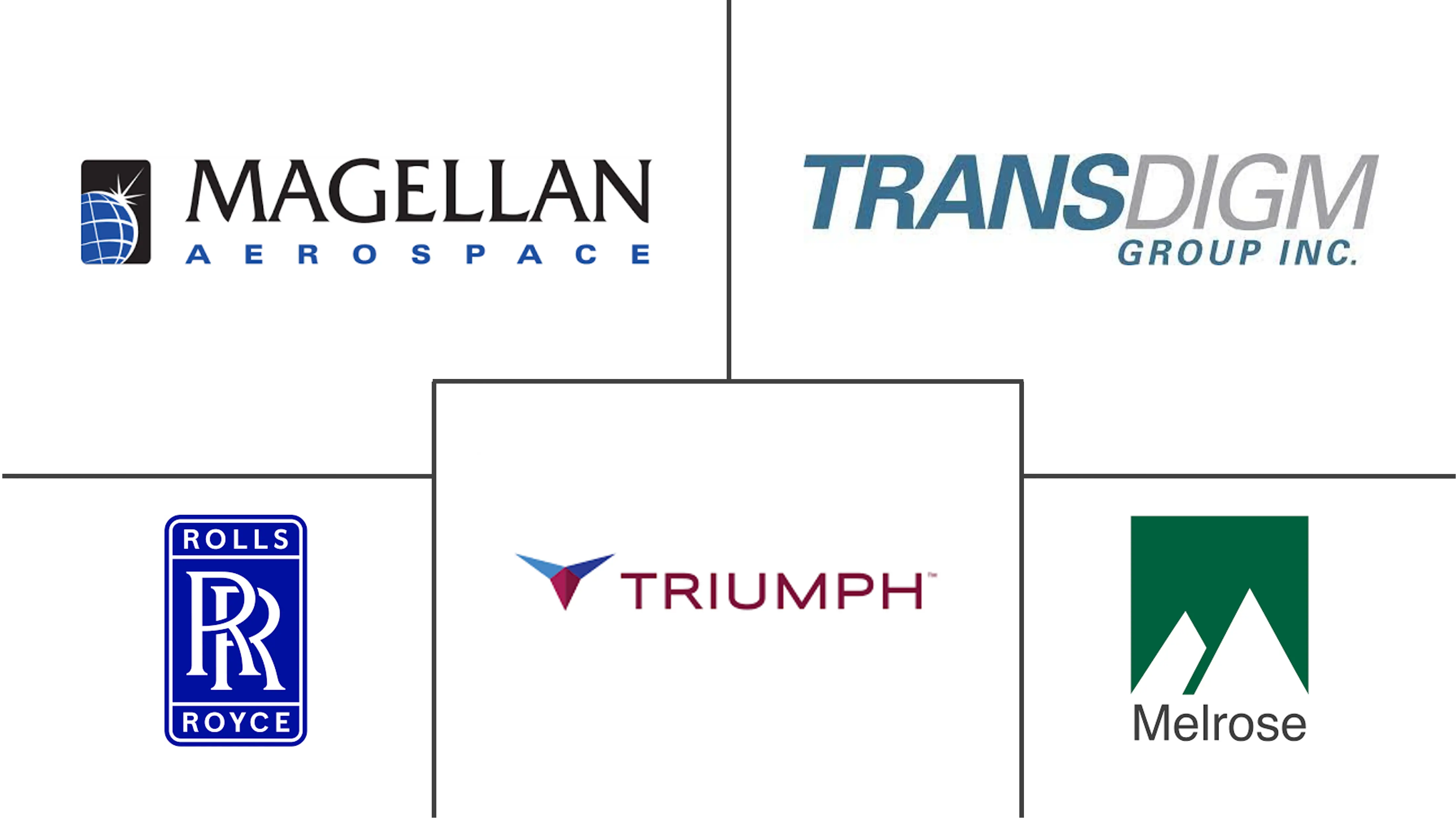Market Size of Aircraft Exhaust Systems Industry

| Study Period | 2019 - 2029 |
| Market Size (2024) | USD 1.06 Billion |
| Market Size (2029) | USD 1.45 Billion |
| CAGR (2024 - 2029) | 6.49 % |
| Fastest Growing Market | Asia Pacific |
| Largest Market | North America |
Major Players
*Disclaimer: Major Players sorted in no particular order |
Need a report that reflects how COVID-19 has impacted this market and its growth?
Aircraft Exhaust Systems Market Analysis
The Aircraft Exhaust Systems Market size is estimated at USD 1.06 billion in 2024, and is expected to reach USD 1.45 billion by 2029, growing at a CAGR of 6.49% during the forecast period (2024-2029).
The market's growth is an outcome of the organic growth of the aviation industry, as a large number of aircraft deliveries are scheduled during the forecast period. Aircraft exhaust systems are essential for ensuring a proper propulsion cycle. Integration of the engines with the new-generation aircraft will drive the demand for individual components of the exhaust systems.
The aviation industry incumbents are keenly investing in the development of new aircraft propulsion technologies to enhance the performance characteristics of newer-generation aircraft. Emerging technologies, like the electronic thrust reverser actuation system (ETRAS), will drive the R&D efforts divested toward developing advanced engine subsystems. ETRAS is a hybrid system that enables automated thrust reverser operation through electromechanical actuators. The ETRAS will physically combine the existing electrical thrust reverser actuation controller (ETRAC) and thrust reverser power unit (TRPU) of the aircraft engine into a single system, thereby reducing the engine's weight profile by a significant margin.
The increasing use of new manufacturing technologies, such as automated fiber placement (AFP), is envisioned to reduce the aircraft's turnaround time (TAT). It is to manufacture airframe components, such as tubes with a T-shape or Y-shape or tubes with circular shape flanges, like exhaust ducts, in jet engines.
